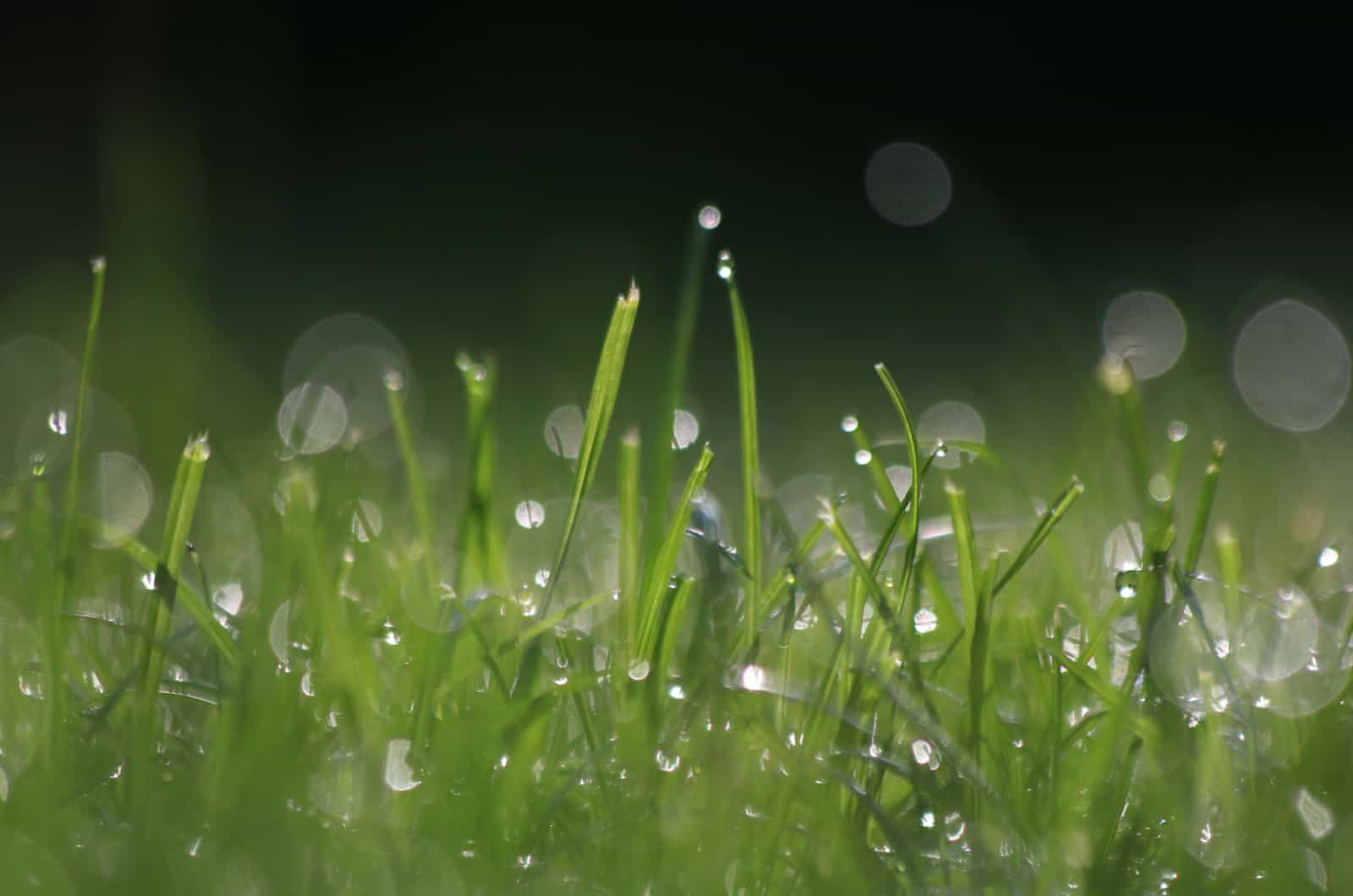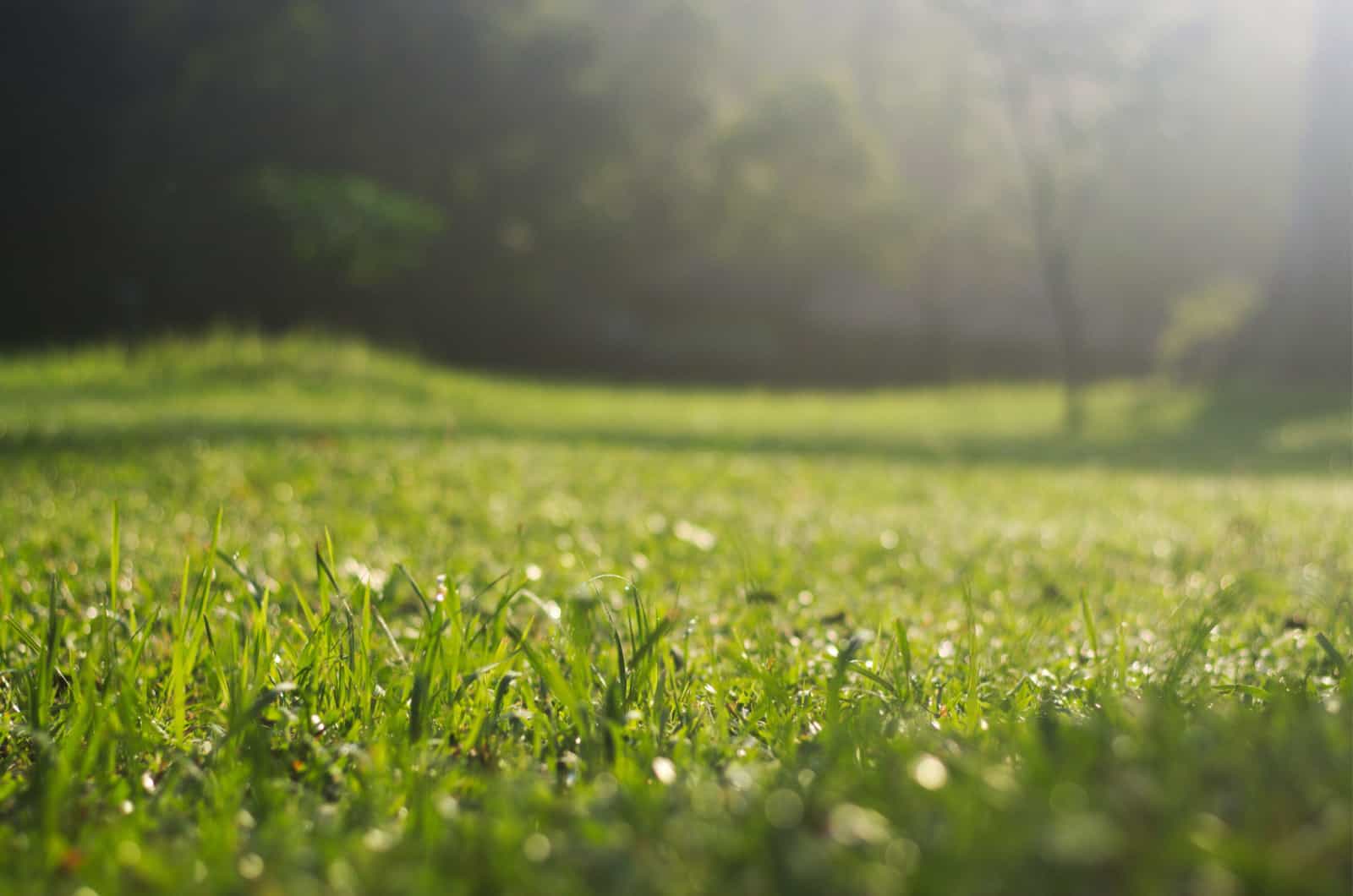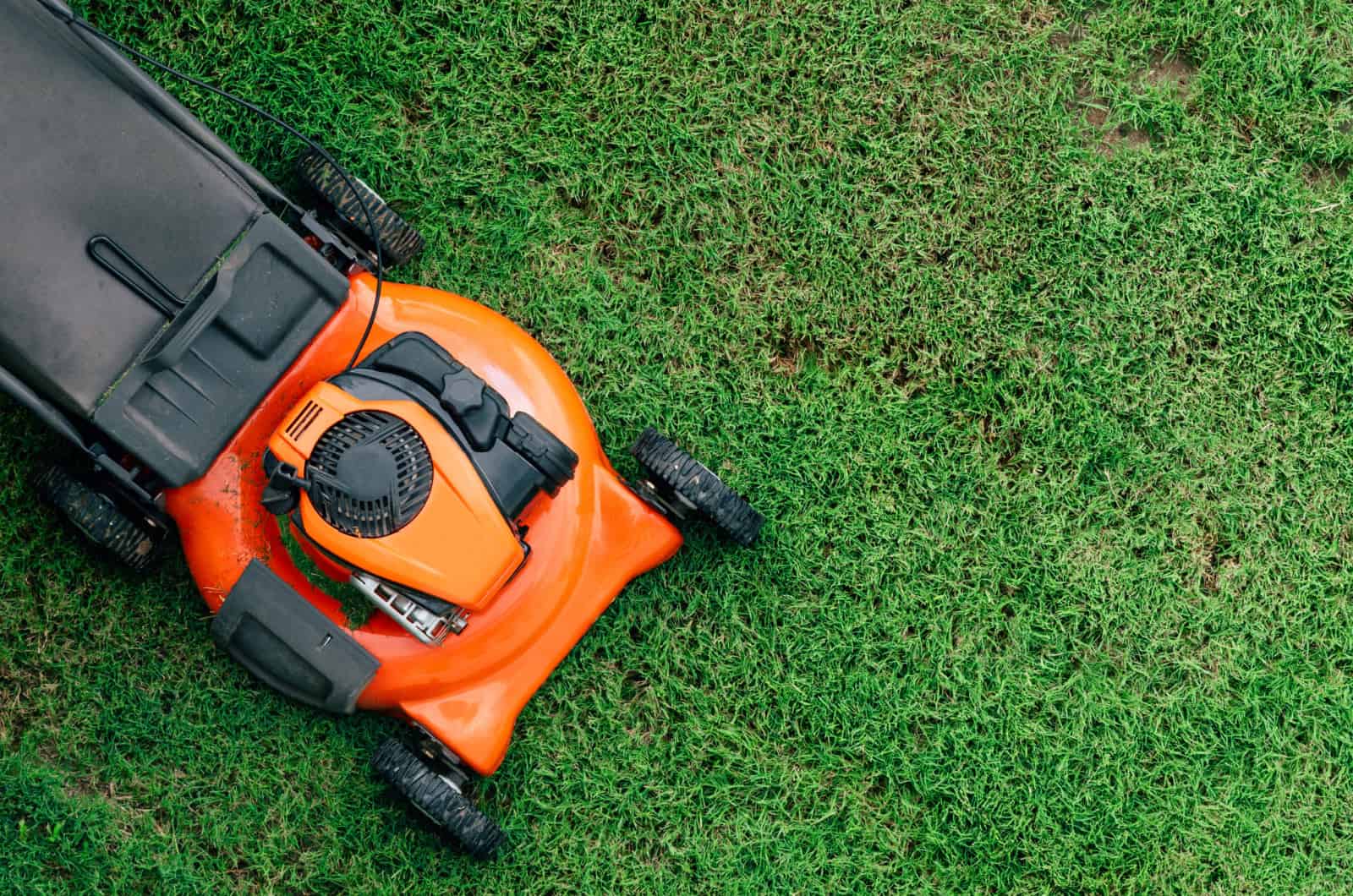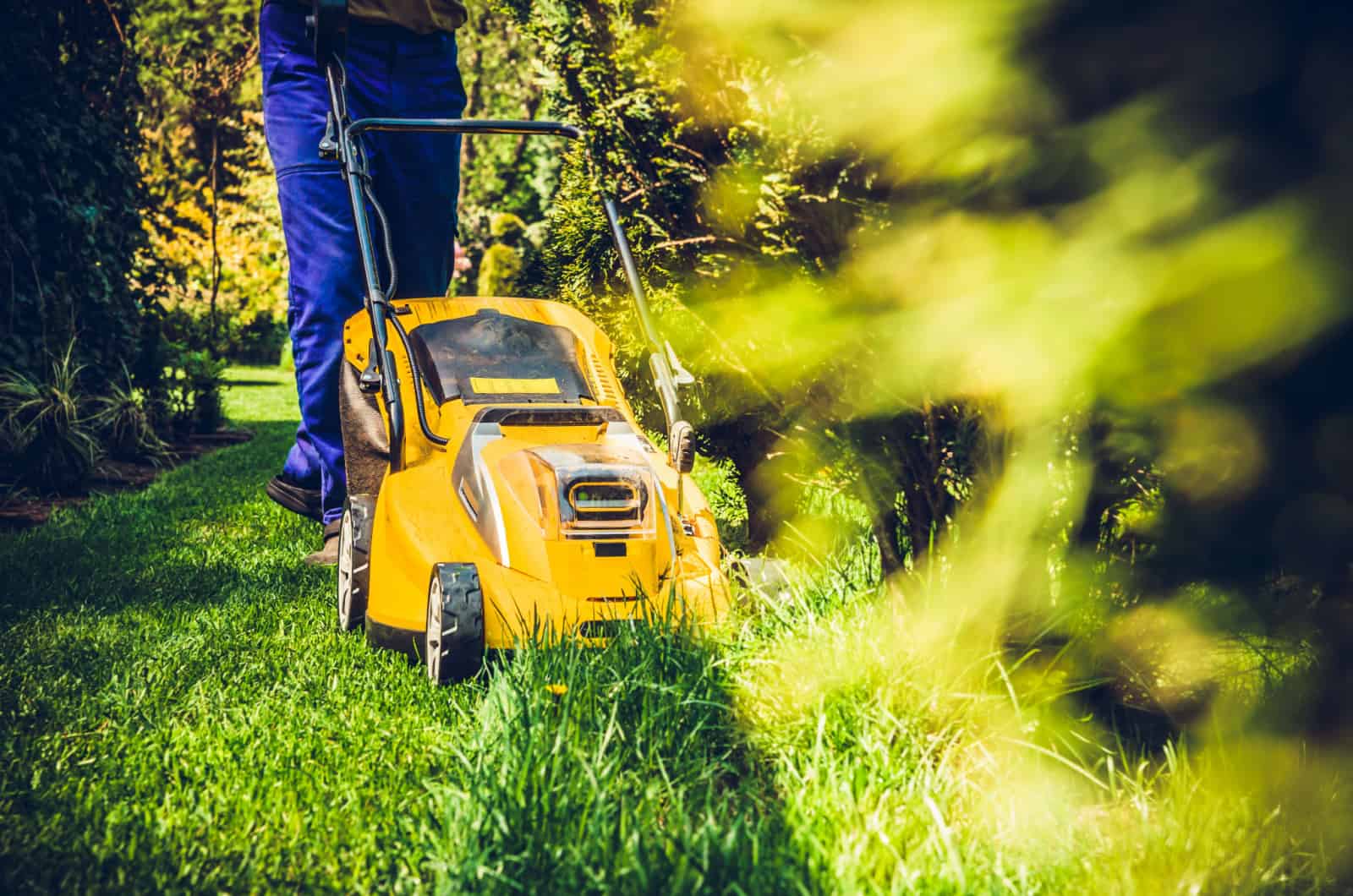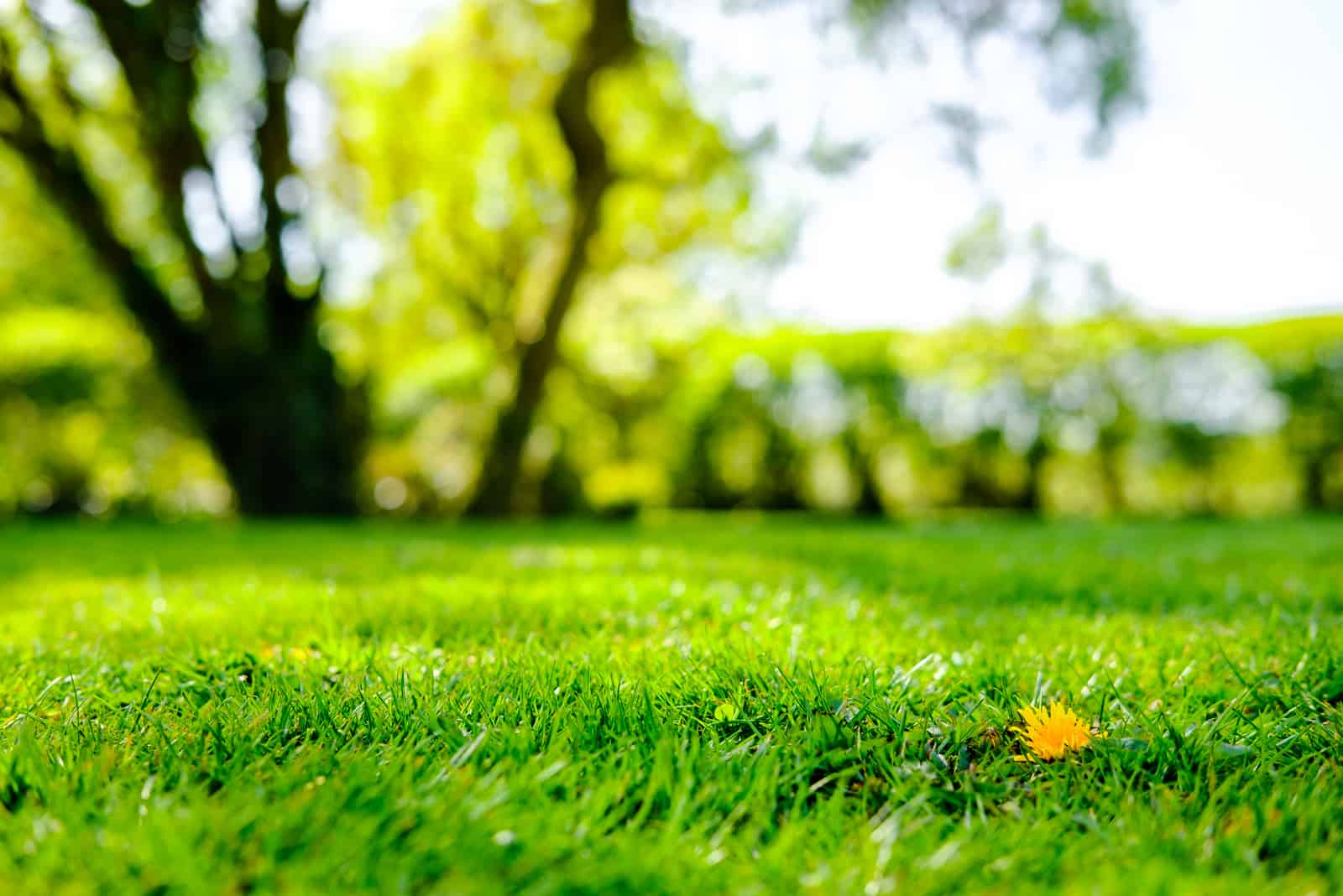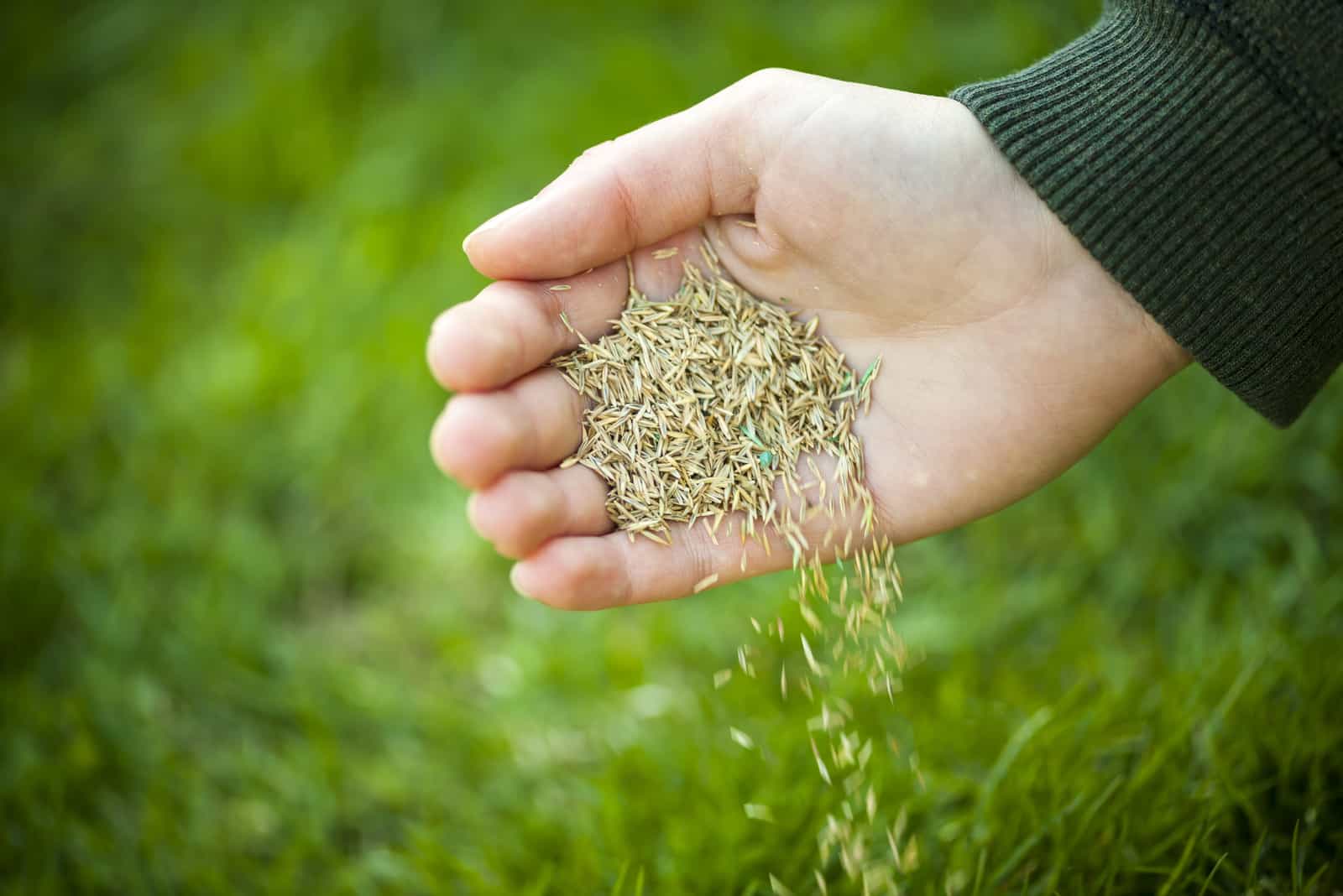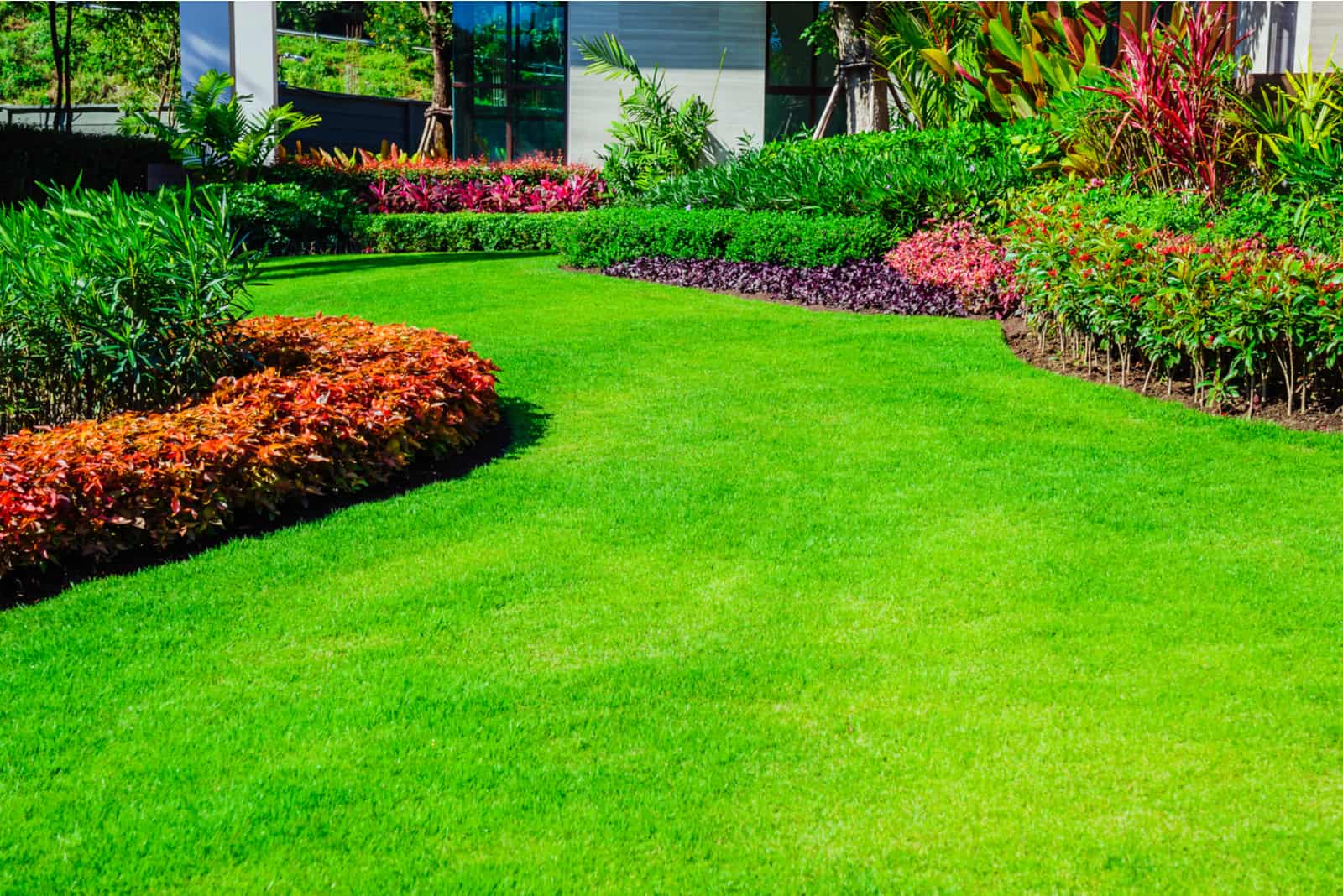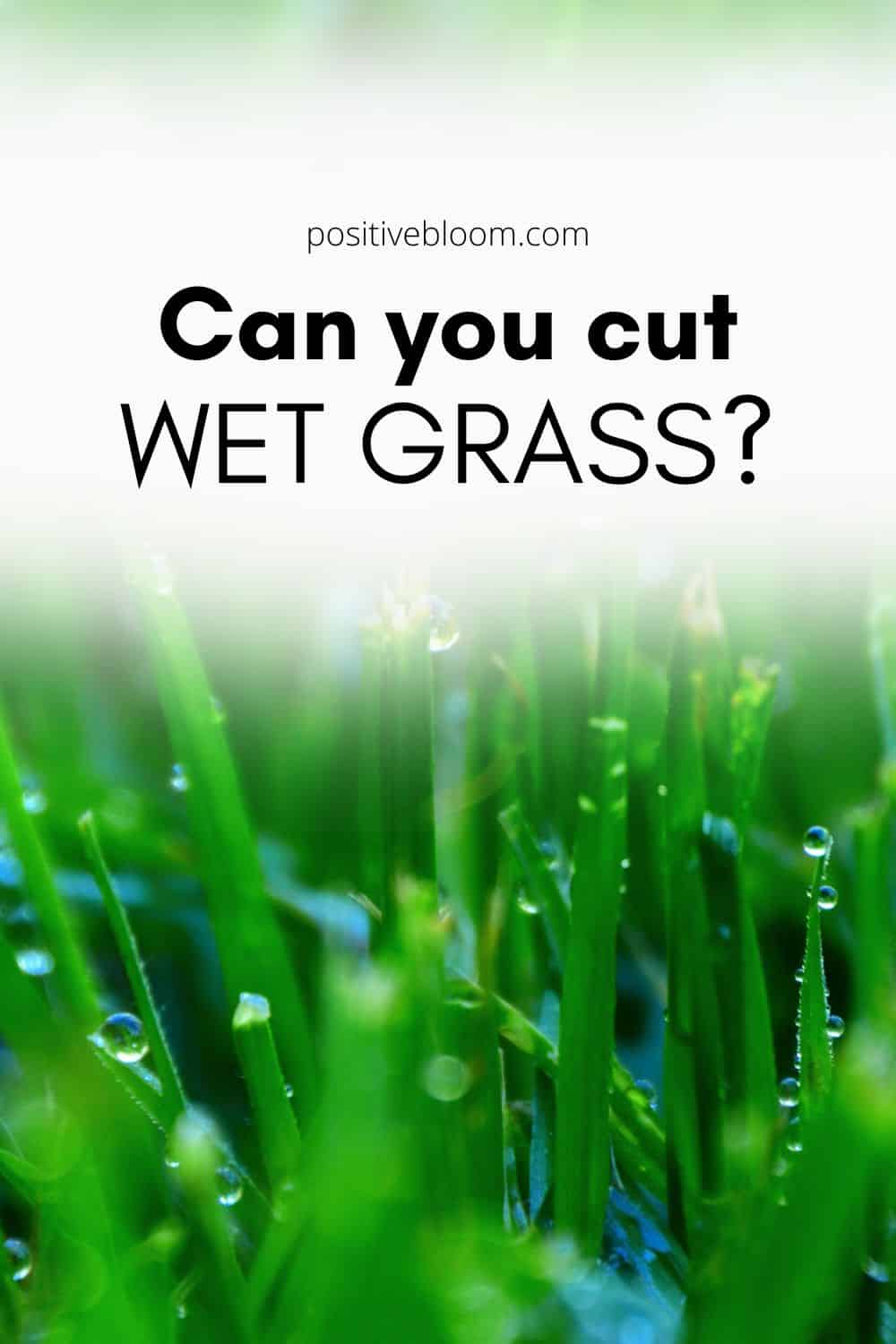Cutting grass on a hot summer day is exhausting, especially if the grass is a fast-growing type that has to be cut every week!
That’s why mowing the grass on a fresh day after rain is so tempting.
Although it might sound like a good idea, and would definitely make this task a bit more pleasant, your grass wouldn’t be very happy. There are several things that you have to take into consideration before mowing your lawn, and mowing wet grass is a big no-no!
If you were wondering, can you cut wet grass? And want to know how to properly take care of your lawn, keep reading to learn everything you need to know about it!
Can You Cut Wet Grass?
Mowing a wet lawn is not a good idea! Cutting wet grass should be avoided at all costs.
There are plenty of reasons you shouldn’t cut wet grass, from wet grass clippings clogging your mower and causing uneven cuts, to lawn base damage and fungi attraction. You might completely ruin your lawn if you mow wet grass, and then you will have to start all over again!
However, there are certain times that you will have to cut wet grass. In this case, you will have to follow different protocols when it comes to mowing the lawn. First, we are going to discuss more reasons why mowing a wet lawn is a bad idea, and we are then going to give you some tips for if you must mow a wet lawn.
Reasons Not To Mow Wet Grass
After the rainstorm comes the sunshine, right?
Well, you better wait for that sunshine to dry out the damp grass before you start your lawn mower!
Cutting wet grass is a big deal, so keep reading to find out why you should only ever cut dry grass. You will only end up with mower issues, and cleaning up wet grass clipping after mowing is a real headache!
1. Attracts Fungi
Just like overwatered houseplants deal with different fungal diseases, the same goes for wet grass; fungi absolutely thrive in wet environments!
Cutting wet grass increases its susceptibility to fungal infections and turfgrass diseases, which can ruin your existing lawn. If you don’t clean your lawn immediately after mowing, those wet clumps of clippings without proper airflow are heaven for various fungi, which is why you will see brown patches on your lawn after mowing.
These clippings can stick to the underside of the mower deck, where mold will start growing and spread the next time you cut your lawn.
Here are some of the fungi often found in lawns:
• Anthracnose — this fungus is also found in many houseplants, but you can easily spot it right after you mow wet grass. This type of fungi causes reddish and brown patches on the lawn.
• Red thread — signs of red thread infestation are red patches on the tips of blades of grass.
• Leaf spot — various plants are susceptible to this fungus, and the main reason is overwatering. If you notice any brown spots with dark brown or purple margins, then your grass is probably dealing with this disease.
These fungi are usually treated by applying fungicides to the affected areas, though you should definitely check your water regimen and never mow your lawn right after wet weather!
2. Uneven Cut
If you want an even and clean cut, the grass needs to stay straight and tall so the lawn mower blades cut straight through it. However, water from the rain can weigh the grass down, which results in some grass clumps sticking together and bending.
No matter what type of mower you use, when the blades cut through wet grass, you will end up with an uneven cut. Sometimes, the blade can simply miss the clumps that are laying low on the ground, so you might have to mow the lawn again once they dry out and rise back up.
To make things even worse, sharp blades can sometimes pull these grass clumps completely out of the ground, which results in bare spots all over the lawn!
3. Possible Lawn Mower Damage
There are several issues that can come with cutting wet grass, even if you have the best lawn mower. If you spend a lot of money on a lawn mower, you will do anything to avoid damaging it.
First of all, wet grass clumps can clog the blades of your lawnmower, which will slow them down and require more effort from the engine to turn. Due to their lower torque compared to gas lawn mowers, electric lawn mowers frequently have trouble cutting through wet grass at all.
The leftover fuel in the fuel tank can get contaminated by excessive moisture that corrodes the machine. Cut grass clippings can also hinder the work of the mower by attaching to it and clumping together to block the vacuum or the blade.
4. Water & Electricity Don’t Mix
We all know that mixing water and electricity is a big no-no!
Well, the same thing applies to mowing the lawn right after a rainstorm, especially if you are using an electric lawn mower. Electric shock can occur when you are using this kind of mower on damp grass, especially with an extension cord.
Any exposure to moisture might harm the machine and electrocute the user, especially if the wiring is worn or there are any broken parts of the machine.
This is risky even with gas-powered mowers because the rainwater might get into the fuel tank (this was one of the issues with my Country Clipper mower). This may result in an engine problem or complete engine failure. Water can corrode engine components over time, resulting in damage that is expensive to fix.
5. Slippery Ground
I am sure that you are probably aware of how sharp mower blades are, and how easily they can cut anything that gets in their way. Grass also gets very slippery!
When you are mowing wet grass, there is always a chance that you might slip and cut yourself on the blades or hit your head on something, no matter how good your sneakers are!
If you slip and fall, your clothes will also end up covered in grass stains.
As a homeowner, you have likely already dealt with some dangerous stuff in landscaping and gardening, but mowing wet grass, especially if you have a sloped lawn, should be avoided at all costs.
6. Lawn Base Damage
You might end up with wheel ruts all over your lawn. This happens because the soil gets oversaturated with rain, and as the wheels of the machine move, they slightly sink and tear up the grass.
Mowers are hefty pieces of equipment that shouldn’t be used on muddy, soft ground. The ruts and soil compaction caused by the wheels (and even by your shoes) can harm roots and prevent the regrowth of good grass in the future. The same thing goes for walking on new grass.
This is why you should always inspect the soil before mowing, and if it feels muddy or soft, postpone cutting it for a few days.
7. Hard Cleanup
Damp grass clumps are extra sticky, so you’ll have to spend much more time cleaning them compared to cleaning dry grass after cutting.
Leaving them on the lawn should be avoided because they can attract fungi and create bare spots on the lawn.
The grass clippings also stick to the mower, and if you don’t remove them, there is a risk of mold growing all over the blades! If you use the mower again without cleaning it, fungi can spread all over your lawn.
Lastly, chlorophyll in freshly cut wet grass will leave more stains than dry grass, so you will have to thoroughly clean the tires, blades, and sneakers.
If You REALLY Must Cut Wet Grass…
There are certain occasions where you have no choice but to cut wet grass.
Here are some lawn care tips that you can use when cutting wet grass:
• Raise the mowing height so the grass clippings are smaller. This reduces the chances of them sticking into grass clumps.
• Sharpen the mower blades before cutting. This will help you get a cleaner cut even though the chances of an even and clean cut are significantly lower when cutting wet grass.
• Narrow the swatch you’re mowing so that fewer blades of grass are removed with each pass.
• Instead of mulching or bagging the grass clippings, just throw them away. Wet grass doesn’t work well for mulching, and would only stick to the bag’s interior.
• Stop mowing periodically and clean the underside of the mower in order to prevent grass clippings from sticking and clogging the mower.
When Is The Best Time To Cut Grass?
People often make the mistake of cutting grass in the early morning while the morning dew is still on the grass. However, it will have the same effect as if you were mowing right after a rainstorm!
On the other hand, early afternoon temperatures may be excessively warm, which could cause your recently cut grass to burn.
Midday is the ideal time of day to mow a lawn. Your grass will have time to recover and take in the sun for the remainder of the day because the morning dew will have dried up.
Lawn Care Tips And Tricks
Make sure the grass is always greener on your side of the fence with these simple tips and tricks!
There are a few things you should think about before sowing grass seeds:
• Climate in your region
• Type of soil
• Weather conditions
• Sun exposure
Choose The Right Grass Type
Even after putting a lot of work into getting the soil ready for planting, you might not get any grass if you don’t sow the right type! For this reason, it’s important to choose the finest grass for your lawn. Everyone aspires to have the renowned Kentucky bluegrass, with its stunning blue-green hue and distinctive radiance, but it won’t grow just anywhere.
For instance, some grasses prefer shaded places to intense sunlight, while others do well in the opposite environment. Grasses are mainly divided into warm-season grasses and cool-season grasses, so I would advise you to first evaluate the climate in your area before buying seeds.
Warm-season Grass Types
Although they may survive in cooler climates, warm-season grasses need temperatures over 75 degrees Fahrenheit to flourish. Grass will turn brown at any temperature below 55 degrees Fahrenheit, however. Late spring and early summer are the best times to grow these varieties.
Warm-season grasses include Bahiagrass, Zoysiagrass, Centipede grass, Bermuda grass, and St. Augustine grass.
Cool-season Grass Types
Although they may tolerate much lower temperatures, cool-season grasses prefer temperatures between 60 and 85 degrees Fahrenheit. It is best to grow these varieties in the fall or early spring.
These types include Fine Fescue, Tall Fescue, Ryegrass, Bluegrass, and Bentgrass.
Improve Your Soil
Improving your soil is one of the most important parts of having a healthy lawn. Knowing your soil type before selecting a grass variety will help grass seed germination and further development.
Loam, sand, clay, and silt soils are the most common soil types.
As a result of the compactness and poor nutritional content of clay soil, seeds may have difficulty growing deeper roots. Bermuda grass, Kentucky bluegrass, and Zoysia can all flourish in clay soil. Centipede, Zoysia, and Bahia grass grow better in sandy soil because it is dry and has a lower pH.
Because it can hold moisture and is rich in nutrients, silt soil is usually the best choice. It is therefore perfect for most varieties of grass. If you want to have a lush, green lawn, loam is ideal because it combines all three types.
The pH of the soil is another factor to take into account, and almost all grass varieties prefer a pH between 5.5 and 7.
Tips On Planting Grass Seeds
• Always take into consideration the climate in your region and plant grass seeds that are suitable for it.
• Spend money on top-notch grass seeds and steer clear of using seeds that haven’t been properly stored because grass seeds may go bad.
• Check the pH of the soil before sowing the seeds because grass seedlings require neutral to slightly acidic soil.
• Fertilize the soil before sowing to make sure the grass seeds receive the right nutrients.
• Avoid planting them too deeply as it will prevent them from getting the light and air they need.
• Mulch can be used to keep the seeds in place and stop evaporation in the newly sowed area.
• Herbicides and weed killers shouldn’t be used either before or after planting because they can hinder germination.
• Install sprinklers: even if you have to spend some money, the grass will benefit from it and you will save time and energy.
Tips On Mowing The Lawn
As we now know, cutting wet grass is a big no-no!
However, you shouldn’t undercut your lawn either as this can cause stress. Longer grass blades protect the soil and the seeds that are sprouting there.
Before every mowing session, check to see if the mower blade is clean, sharp, and ready to use. Depending on the type of grass, the mowing height should generally be between 3.5 and 4 inches. Mow your lawn once a week, ideally in the morning after the grass has had time to grow overnight.
Overseeding
Adding fresh seeds to an existing lawn to thicken it up is another fantastic approach to making your lawn appear thicker and greener.
Keep in mind that the timing of seeding is dictated by the type of grass you’re using. For instance, you should overseed your lawn in the fall or spring if you have cool-season grass. On the other hand, warm-season grasses need to be overseeded in late April.
How To Overseed Your Lawn
Follow these easy step to successfully overseed your lawn:
1. Cut the grass on your current lawn short – no more than 2 inches.
2. The seeds can be distributed manually or with a spreader. Pay close attention to any bare or thin areas.
3. Press the seeds into the ground with the back of a rake. The seeds will benefit from this as they attempt to properly root themselves in the soil.
4. The seeds should receive a thin coat of compost.
5. Use a phosphorus-rich starting fertilizer to aid in the development and health of the roots.
6. When the seeds are about 3 inches tall, mow them. These grass clippings can be used as mulch.
Fertilization
The three most important nutrients are nitrogen, potassium, and phosphorus (the NPK formula), and each lawn fertilizer should include one or all three of them. This ratio depends on both the type of grass you are growing and the results of a soil test.
Fertilizer should be added to the soil before planting the seed and throughout the growing season because the grass will take all the available nutrients for growth and development.
Fertilizer comes in both liquid and granular forms. Granular fertilizers are typically applied once a month, while liquid fertilizers should be used every other week. Always follow the instructions closely.
I advise using a slow-release fertilizer if you don’t have much time to care for your grass. By gradually releasing nutrients throughout the year, this type of fertilizer only needs to be applied once in the early spring to feed your grass all year long.
Read also: How To Make Lawn Green And Thick: Simple Methods And Handy Tips
Aeration And Dethatching
Aeration is a great method for improving the soil’s air circulation and enabling greater water and nutrient absorption. There are a few things you can do after aerating your lawn to make it seem even better!
Dethatching involves getting rid of the thatch that has built up on the soil that keeps the grass from getting essential nutrients. A covering of organic debris, such as grass clippings and leaves, is referred to as a “thatch”.
You have two options: either start a fresh DIY project and rent the tools required for these tasks or contact a lawn care company and employ qualified assistance.
Frequently Asked Questions
1. What will happen if I cut wet grass?
There are many reasons you shouldn’t cut wet grass. First of all, it will attract various fungi that will leave you with bare spots on your lawn. Wet grass clippings can clog your lawn mower and also stick to the underside of the deck, and if you don’t clean this immediately after mowing, there is a chance that it will get moldy and spread the next time you are mowing the lawn.
You might also slip and fall on wet grass, which is extremely dangerous when operating a machine with sharp blades!
There is also a risk of getting electrocuted if you are using an electric lawn mower. Lastly, you will only end up with an uneven cut, which does not look aesthetically pleasing.
2. What is the best time of day to mow wet grass?
As you are not supposed to mow wet grass, there is not really an ideal time of the day to mow grass. However, if you really must mow wet grass, then you should do it in the middle of the day.
This way, your grass will absorb sunlight for the rest of the day and have enough time to recover.
3. How do you mow wet grass?
There are a few tricks that you can use if you really must mow wet grass. For instance, you should raise the mowing height so that the grass clippings are smaller, which will reduce the chances of them sticking into grass clumps — these prevent airflow and attract fungi.
Next, you should sharpen the mower blades before cutting, even though there is still a high chance that you will end up with an uneven cut. Don’t use these grass clippings for mulching or bagging, just throw them away instead.
Don’t forget to stop mowing periodically to clean the underside of the mower to prevent grass clippings from clogging the mower.
4. How soon after it rains can I mow the lawn?
If there is a light morning rain, you can wait from 2 to 5 hours for the grass to dry out. However, if there was a rainstorm, you should wait a day or two to mow your lawn.
To Sum Up
I hope we have thoroughly answered the famous question, “Can you cut wet grass?”.
Even though some gardeners might tell you that it’s perfectly fine, I honestly think that cutting wet grass should be avoided. Not only can it ruin your expensive lawn mower, but it will also leave you with an uneven cut that you will have to fix.
I know that taking care of your lawn can sometimes be tiring, but it is definitely worth the trouble once you see your kids and pets running around while you sit there and enjoy your cup of coffee on a warm spring day!
I hope this article was helpful.
Until next time!
Like this post? Share or pin it for later!

